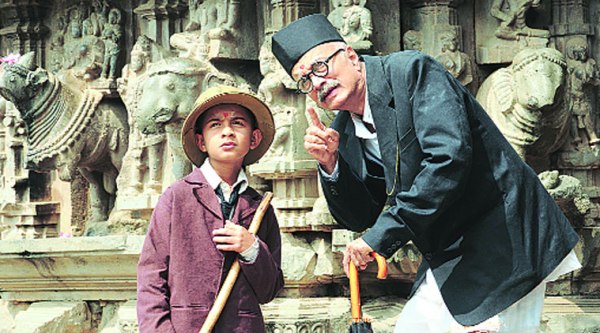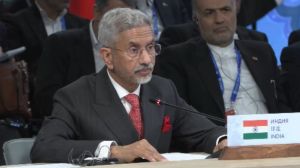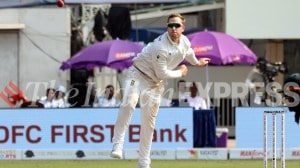Click here to follow Screen Digital on YouTube and stay updated with the latest from the world of cinema.
Game-changing moment
Ganesh Kadam, whose directorial debut Vitti Dandu released recently, on what drove him to direction, the challenges he faced and his love for Marathi culture
 A still from Vitti Dandu
A still from Vitti Dandu
By Aashay Khandekar
The most valuable treasure a child can acquire in the formative years is the wisdom passed on by his/her grandparents. Though Ganesh Kadam, whose directorial debut project Vitti Dandu released on November 21, was fortunate enough to spend some quality time with both his grandmothers — maternal and paternal, but does not have any memories related to either of his grandfathers, as they had passed away when he was very young. To fill this void, Kadam chose the medium of cinema to portray the role a grandfather plays in the growing-up years of a child.
Produced by Ajay Devgn Films, Marathi film Vitti Dandu revolves around Ravindra Mankani, a grandfather, who tells his grandson the story of his grandfather, who had turned his life upside down with a game called vitti dandu. The story is set in a small, beautiful and pre-independence Konkani village called Morgaon, which is situated around the sea. The film revolves around Morgaon’s struggle to get rid of the British regime.
“The movie shows a man living with his grandson in this village. His son and daughter-in-law are killed by the Britishers, which makes him intimidated and he dresses his grandson like a British, teaches him their etiquette and even forces him to wear a hat. Conflict arises when the grandfather gets arrested,” says Kadam, adding that the game of vitti dandu then plays a vital part. While veteran actor Dilip Prabhavalkar plays the grandfather, the role of the grandson is essayed by Nishant Bhavsar.
Talking about the significance of the game in the film, Kadam says, “It used to be as popular as cricket in the olden days. Many of the age-old games have disappeared with time. My attempt was to retrieve as many things as I can.” He says he has added all kinds of Marathi folk art forms such as Bharud, Powada and Lavani in the movie. “Folk art is essential because it provides an excellent medium to raise voice against malpractices in the society. Many villages in Maharashtra today are also influenced by these performances,” says Kadam.
Born and brought up in Mumbai, Kadam studied in the Balmohan Vidyamandir and Kirti College of Dadar. Before choosing to work as a freelancer, he worked with Manas Art and Culture, as well as Raj Radha Movies doing mainly television promos and advertorials. However, the creative germ inside him didn’t let him sit quiet. “I wanted to direct a film that would have a grandfather-grandson relation at its centre. I shared my idea of Vitti Dandu with writer Vikas Kadam, who then weaved a beautiful plot around it,” says Kadam.
One of the biggest hurdles Kadam faced while directing the film was finding a location that would give the look of pre-independence era. “We found many beautiful houses with old architecture, but tremendous development had taken place around them. If we found an ideal place, there were electricity polls and boxes welcoming us. Here, the advanced technology came to our rescue,” says Kadam.


- 01
- 02
- 03
- 04
- 05
































